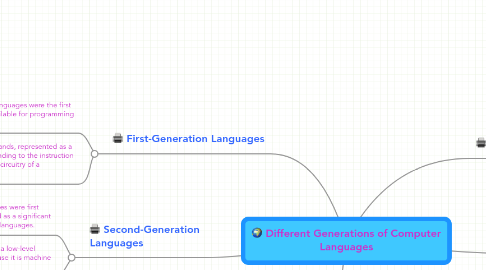Different Generations of Computer Languages
by Jacqueline Bene

1. First-Generation Languages
1.1. Machine Languages were the first languages available for programming computers.
1.2. Consists of a set of commands, represented as a series of 1s and 0s, corresponding to the instruction set that is hardwired into the circuitry of a microprocessor.
2. Second-Generation Languages
2.1. When Assembly Languages were first introduced, they were hailed as a significant improvement over machine languages.
2.2. Classified as a low-level language because it is machine specific.
3. Third-Generation Languages
3.1. When high-level languages were originally conceived in the 1950s.
3.2. Seemed a major improvement over machine and assembly languages.
3.3. Were easy to remember, and could command words.
4. Fourth-Generation Languages
4.1. In 1969, computer scientists began to develop high-level languages.
4.2. More closely resembled human languages, or natural languages.
5. Fifth-Generation Languages
5.1. Those that allow programmers to use graphical or visual tools to construct programs, instead of typing lines of codes.
5.2. Computer programming language based on declarative programming paradigm.


